
If you indulge in a kind of fitness, you will realize that almost all kinds of workouts require decent sports shoes. Based on what is your fitness regime? Whether you are a runner, or you play a racket sport, or any other sport, or just train in the gym, depending on the workout or the sport, you have to have appropriate shoes.
The injury caused by inappropriate shoes can needlessly derail your fitness routine. Strenuous outdoor workout or long distance running puts an increased amount of pressure on your feet and therefore wearing the right shoes are important to prevent injury.
The next most common question asked by people is what shoe do I buy? Whether you are a pro, intermediate or beginner in running, shoe shopping can be tricky. The technology is constantly changing and there is continuous research happening on this front due to which new products, foams, and materials are being invented every year. This is creating confusion among runners and they do not know what to believe and what not to believe.
Some common mistakes Runners make while buying Running Shoes.
- Wrong foot measure leading to wrong shoe size impacts running.
- Confusing volume with the width of the shoes. Should I buy with more cushioning or less? And, end up selecting the wrong one.
- Buying one size bigger than your original size and they trying to adjust the size by wearing thicker socks, this hinders running practice.
- Following your Runner Friends. If you are a beginner and you have a friend who is a good runner, you always end up buying the same shoes which your Friend is using.
- Wrong reviews about shoes. Nowadays people start purchasing shoes online and their online seller can easily manipulate the reviews by giving fake reviews. Which misguide the people who buy their shoes on the basis of Reviews.
- Cool dashing Shoes. Sometimes you end up buying the shoes only because it looks cool and enhances your personality.
- Discount and Offers – Some stores trying to clear their stocks and run some attractive offers, please avoid such offers as all shoes have their life and these shoes under offer has already spent their life on a shelf.
- Buying shoes during the day- Most are unaware of the fact that feet swell during the course of the day. Your feet tend to get bigger at night. Therefore, you need a footwear that fits well—not too tight—during all hours, so always prefer your shoe shopping later in the day.
- Trying only one shoe– While buying shoes more often than not, most try out only one shoe. I am not sure if you are aware that both your feet are not the same size. Chances are that one shoe will be fit on your one feet but not the other one. Hence, measure both your feet and then buy a pair of running shoes that fit the bigger foot.
- Try shoes with the right socks: We always check the shoes by wearing the dress socks which is provided at the store for trial but let me point out here that dress socks are generally thinner than running socks (that has more cushioning), and this affects the fit of the shoes. Always take your running socks with you when you go to purchase running shoes.
Let me now give you some basic information about shoes and all that you need to keep in mind while shopping for your running shoes.
Here is the image of basic Shoe anatomy:
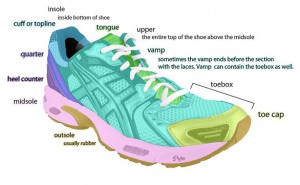

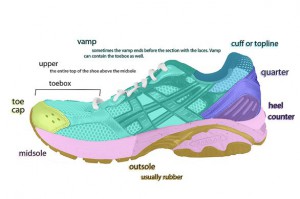

Running Shoes are divided into 3 parts:
- Outsole
- Midsole
- Insole
- Upper
- Outsole: A rubber outsole is where the bottom of a shoe is made of rubber. The outsole is the part of the shoe that comes in contact with the ground. It’s made of carbon rubber, blown rubber or a combination of the two. It provides durability and traction. The outsole can have many designs, flex grooves, and a split heel
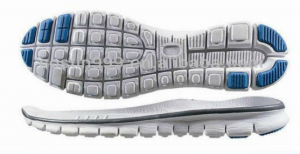
2. Midsole:
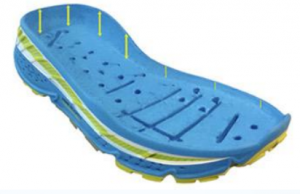
The midsole comprises the cushioning material, mostly a closed cell foam called EVA (ethylene vinyl acetate). Polyurethane may also be used. Proprietary cushioning devices like encapsulated air or gel can be inserted into the midsole foam. Posts are areas of firmer, harder to compress EVA (ethylene vinyl acetate). Plates stiffen the forefoot area of the shoe. Shank stiffens the shoe under the arch and the middle area of the shoe.
- Insole: It’s a removable insert that the foot sits on in the shoe
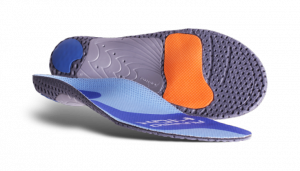
- Upper: This is the material that encases the foot. It’s made from a soft, breathable material. The upper determines how the shoe fits and it has all the fancy looks and design.
The Upper comprises several parts :
➢Vamp and quarter panel
➢Toe box
➢Laces, Tongue, Eyelets, Eyestay, Overlays
➢Heel counter and Heel tab


While Selecting a Running Shoe you have to focus on the following aspects:
- Road vs Trail vs Track: Road shoes should be more flexible and lightweight than the trail shoes which are sturdier and heavier. Track shoes are designed for traction and speed for various track surfaces.
- Women’s shoes tend to be lighter with a softer midsole.
- Foot Strike Pattern: How the foot initially contacts the ground – forefoot, midfoot or heel determines the area and level of cushioning that the runner may require.
- Speed Work: Performance shoes for speed work are built lighter, narrower and lower to the ground than most running shoes. They tend to wear out faster than normal running shoes.
- Injuries and Common Foot Problems: Injuries must be medically evaluated for shoe/orthotic prescription. Common foot problems like black toe, bunions, corns & calluses, ingrown toenails, etc. may find solutions in properly fitting shoes.
- The degree of Pronation:
➢ Normal Pronation: It is the inward roll of the foot (about 15%) on landing
➢ Overpronation: It is the excessive inward roll of the foot (over 15%) on landing
➢ Under pronation: It is the insufficient inward roll of the foot
(less than 15%) upon landing.
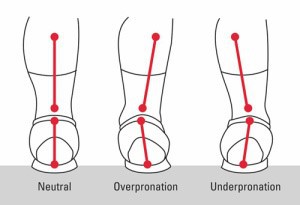
Shoes are broadly classified as neutral, motion-control and
Stability/ support on the basis of the degree of pronation.
Tips for Fitting a Shoe:
- Measure the size of the foot at the store as sizes differ between brands.
- Shoes must be tried on both the feet
- Feet swell after exercise or a run so it’s better to try on shoes when the feet are swollen.
- Try the shoe with socks and orthotics that will be used.
- The toe box should be roomy and shoes comfortable from the start.
- Walk or preferably run on a firm surface with the shoes.
Finally, I would like to finish with the great lines of Hal Higdon – Finish: Even if you run slower than expected time, you succeed in any Marathon when you finish.
So keep running !!




Much needed information . Truly valuable. Thanks for sharing Parwage
Lot of interesting and unknown information.. Thank you Parwage..
Very well explained shoe buying techniques.
Have followed this way for all my marathons,and ultra runs.
Awesome information!!!!! Need more info about shoes for people with flat foot .
Your suggestions have helped me wane down the knee pain.
Useful information….thx Fr sharing
Great knowledge shared and much interesting too .
Parwage,
Excellent blog. Very helpful. This provides much needed information I was looking for.
Thanks
Auro